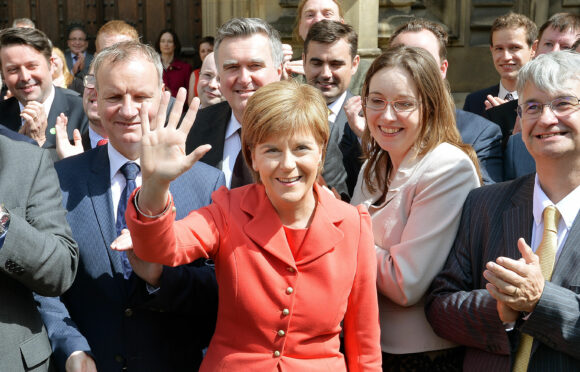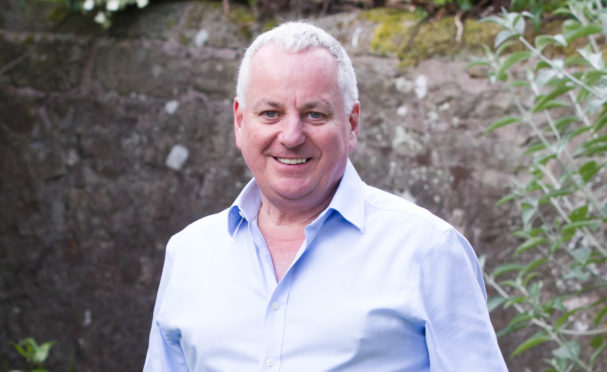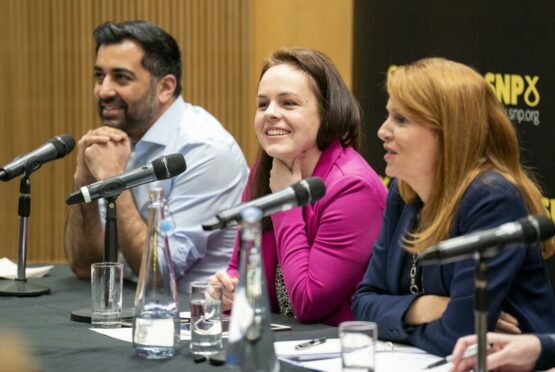
The joke about an imaginary pet giraffe standing as the leader of the SNP pinged into my Whatsapp, as the battle to take over from Nicola Sturgeon reached a particularly vicious phase.
Lofty has reluctantly agreed to seek nomination, explained his MSP owner, because the campaign needed to go high.
“He’s the first three-toed African ungulate ever to seek leadership of a political party, and stands head and shoulders above the rest…”
Alas, even Lofty couldn’t escape identity politics: “He believed himself to be a zebra when a young calf but now sees that as a passing phase and would have opposed the GRR…”
#Lofty4leader has a ring to it while terrible giraffe puns offered some light relief from a depressing campaign. Hopefully we’ve not seen the last of him.
The leadership election process got off to a poor start. Replacing the boss when the acknowledged frontrunner to succeed her is on maternity leave seemed, how shall we say this, somewhat unsisterly. It might even be discriminatory in law, as “maternity” is a protected characteristic under the Equality Act.
Then there was the National Executive Committee decision to change the constitution in order to speed up the whole selection process, which again seemed designed to stop both Kate Forbes and Ash Regan. That failed miserably as all three candidates amassed the required nominations. I hear Forbes secured well over 1,000.
Perhaps the party establishment believed “anointing” a favoured successor would work – it did when Alex Salmond handed over to Nicola Sturgeon. Despite being the continuity candidate, Humza Yousaf is not Sturgeon who, despite recent setbacks, commands respect and gratitude from the grassroots. She wins elections, after all.
But her shock resignation feels almost like ancient history now. Activists who proudly waved “I’m With Nicola” giant foam hands are, it turns out, stubbornly resistant to follow-my-leader politics. They don’t want a coronation, they want a real choice – and a fair fight.
With three very different candidates, a real choice is exactly what is on offer. Kate Forbes promises to reach parts of Scotland previously resistant to independence by focussing on competence, recovery and economic growth, – the key to tackling poverty. Ash Regan has focussed on improving internal party democracy, rebuilding the Yes movement and using general elections as a mandate for independence negotiations.
Neither woman is keen on the disastrous Gender Recognition Reform Bill which damaged Sturgeon. Humza Yousaf has said he would continue the FM’s plan to fight the UK government in court over this unpopular issue. It’s fair to say, therefore, that two out of the three candidates represent change and could between them attract many party members keen for fresh ideas, but previously loyal to Sturgeon personally.
This means the single transferable vote system could work against Yousaf, if Forbes and Regan secure each other’s second preference votes. He would need to win 50% outright in round one to avoid that outcome.
It is these high stakes which have triggered the dark arts and briefings deployed against Kate Forbes in particular after she spoke honestly about her religious beliefs.
The nadir was a front page which suggested that even if party members choose her as leader, some SNP MSPs would vote against her in the parliamentary ballot to choose a first minister, favouring Labour’s Anas Sarwar instead. Political editors don’t just invent stories, there’s always a source. So it follows this preposterous suggestion was given to the journalist by someone inside the SNP.
It was surely counter-productive as it suggests a Trumpian refusal by elected parliamentarians to accept democratic decisions. It also tells party activists their elected members have priorities which don’t include independence or even delivering an SNP government. Of course, the parliamentary arithmetic means the scenario would never happen, as Labour have too few seats, so whoever thought placing it would benefit Yousaf just looks desperate and panicky.
This is the kind of undermining-your-own side we saw in the Tory leadership election last summer which was characterised by personal insults and the triumph of Liz Truss, need we say more?
Infighting is not just a Tory sport. During the Blair and Brown years, it sometimes seemed like the government and the opposition were next-door neighbours in Downing Street. The two men didn’t speak and their teams spent copious energy trying to undermine the other in the media.
For the SNP, mud-slinging and back-biting was what other political parties did. When I entered parliament as a former journalist in 2011, I was struck by the lack of contact between the SNP MSPs and the media, very few spoke to journalists off the record or even had them as friends. I was a bit suspect for even chatting to former colleagues.
There was an iron discipline in the parliamentary group, which was completely focussed on the plan to deliver competence in government in order to build Scotland’s self confidence as we approached the referendum. This was the original “wheesht for indie”, and back in those days it worked well.
But the huge influx of members after 2014 changed that. With more seats in both parliaments comes more opportunities for career advancement – attracting individuals whose priorities are different to the SNP stalwarts of old. After so many years in government, the absence of any project beyond loyalty to the leader has also caused drift, discord and discontent.
Tackling this will be the new leader’s greatest challenge.
Joan McAlpine is a journalist, commentator and former SNP MSP

Enjoy the convenience of having The Sunday Post delivered as a digital ePaper straight to your smartphone, tablet or computer.
Subscribe for only £5.49 a month and enjoy all the benefits of the printed paper as a digital replica.
Subscribe

